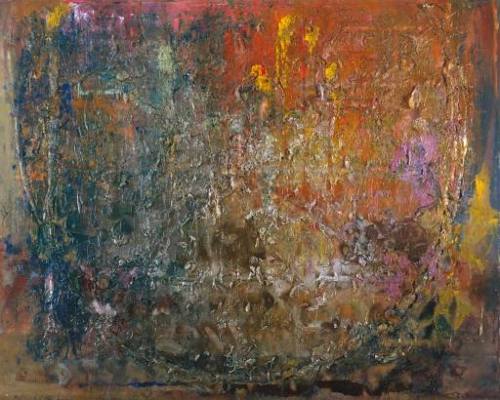17/9/2003
Bending the Grid
Aljira, Newark
A new space for contemporary art opened to emerging artists with "Bending the Grid" that will be a series of exhibitions. First of them is dedicated to South America artist Frank Bowling

Aljira inaugurates Bending the Grid, a series of exhibitions which examine the production of outstanding artists chosen from among accomplished, yet under-recognized national and international practitioners. While often grounded in rational modernist principles, each selected artist finds personal ways to adapt, or circumvent traditional, or rigid aspects of formalism. The
series opens with the exhibition Bending the Grid: Black Identity and Resistance in the Art of Frank Bowling, September 18–December 10, 2003. The press and public are invited to a reception for the artist on the 18th of September, from 5:30 to 8:30 pm.
Mr. Bowling was born in Guyana, South America, and currently works out of studios in London, England, and Brooklyn, New York. As a student at the Royal College of Art, his contemporaries included future luminaries of the British Pop art movements such as David Hockney, R.B. Kitaj, and Derek Boshier. He has been critically acclaimed as a master-colorist developing out of the tradition of the New York school of abstract expressionism. However, the current exhibition investigates another view of Mr. Bowling's accomplishment.
Dorothy Désir, formerly of the Studio Museum in Harlem and Lower Manhattan Cultural Council, curates Aljira's show to focus on Bowling's body of work in the context of the "...Kreyolization process that [shaped] the aesthetic sensibilities of the violently mixed indigenous, African and European cultures born of the earliest days of slavery and imperialism." She examines in the
accompanying catalogue essay how the modernist—or formalist—aesthetic frame of reference usually used to situate Frank Bowling's abstract painting among that of his Euro-American peers fundamentally obscures his specific cultural and political experience as a black Caribbean man in the West.
In a recent issue of Nka, A Journal Of Contemporary African Art, Carl Hazlewood wrote, "...for
[Bowling] there has always been the suggestion of an internal struggle with the complex problem of how to conjure up intrinsic meaning—that is, cultural meaning, via paint material and
color." Bending the Grid: Black Identity and Resistance in the Art of Frank Bowling discovers and decodes that cultural meaning within the constant ebb and flow of Bowling's alternately delicate and assertive body of work.
Aljira, a Center for Contemporary Art
591 Broad Street
Newark, NJ 07102
Phone: (973) 622-1600
Fax: (973) 622-6526



